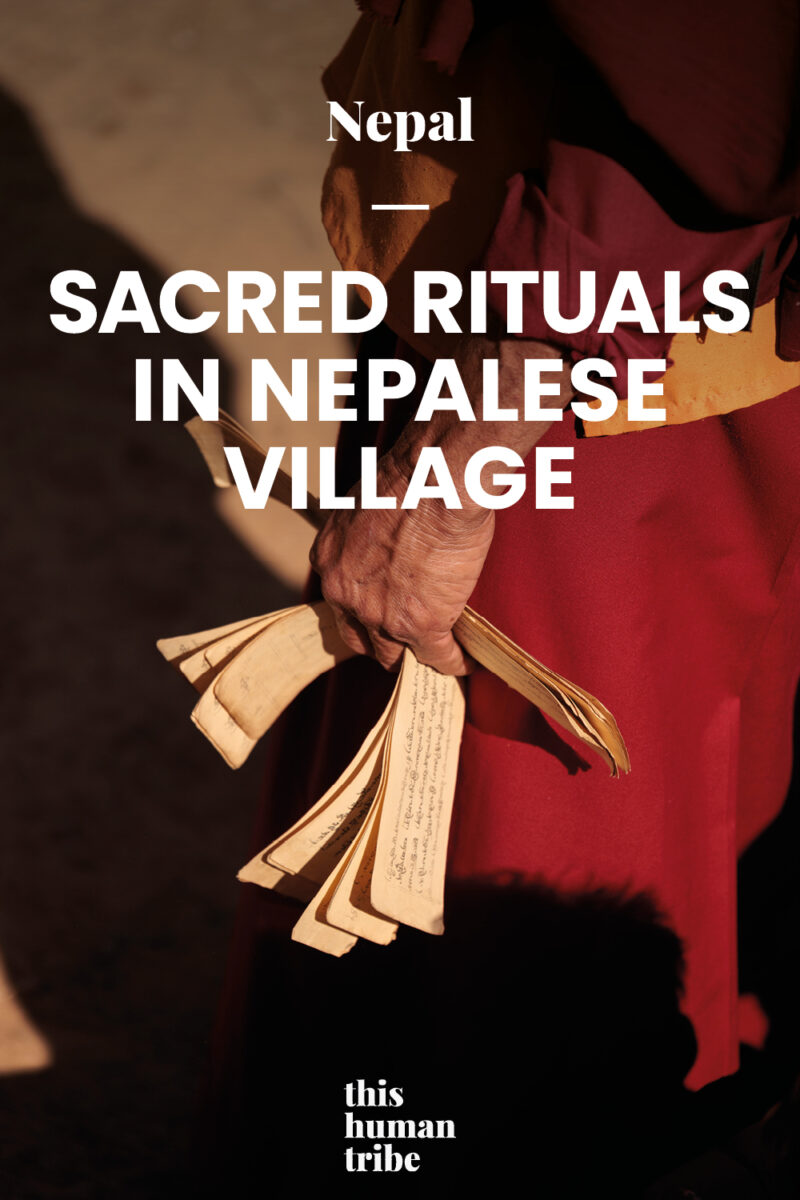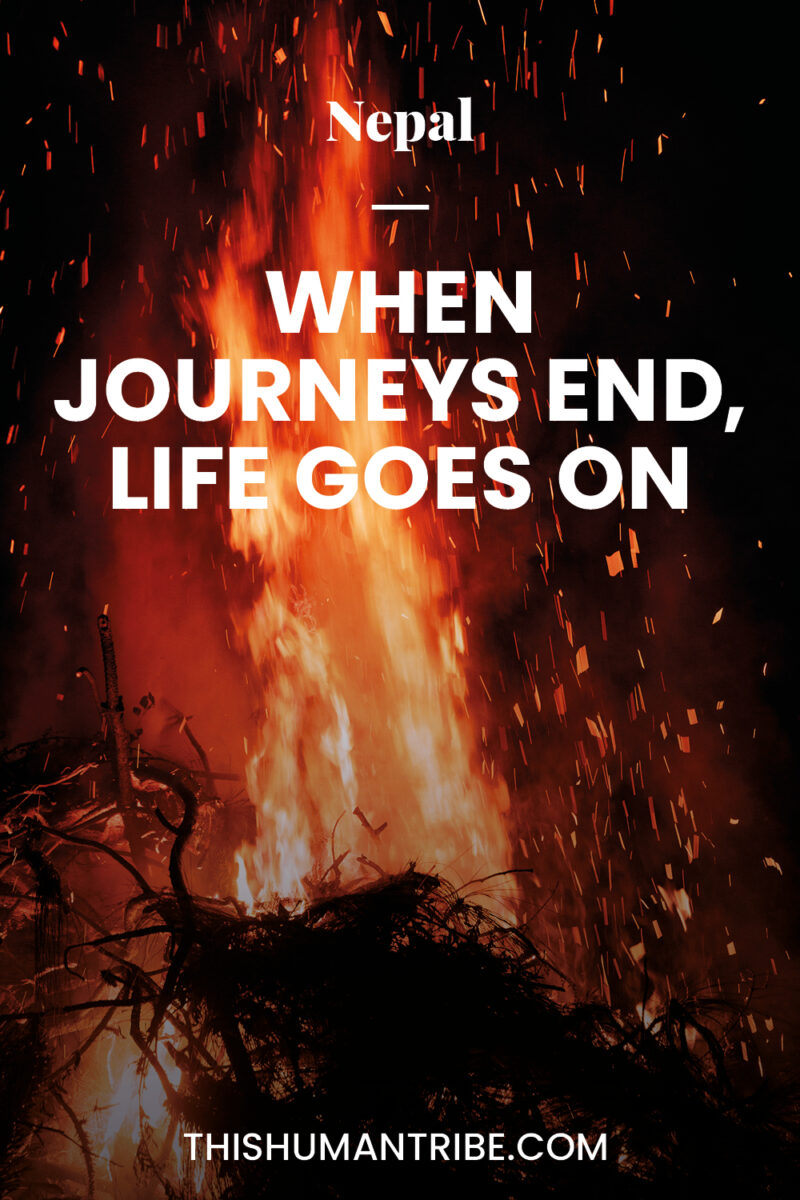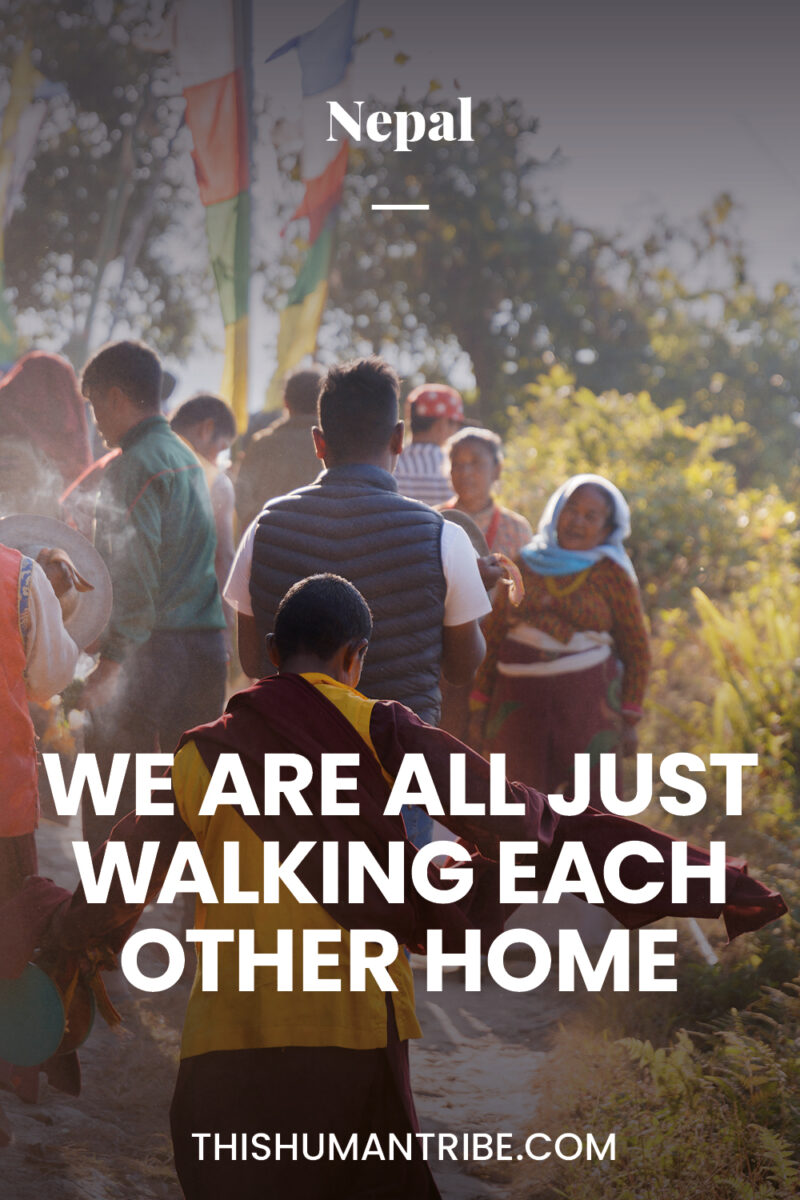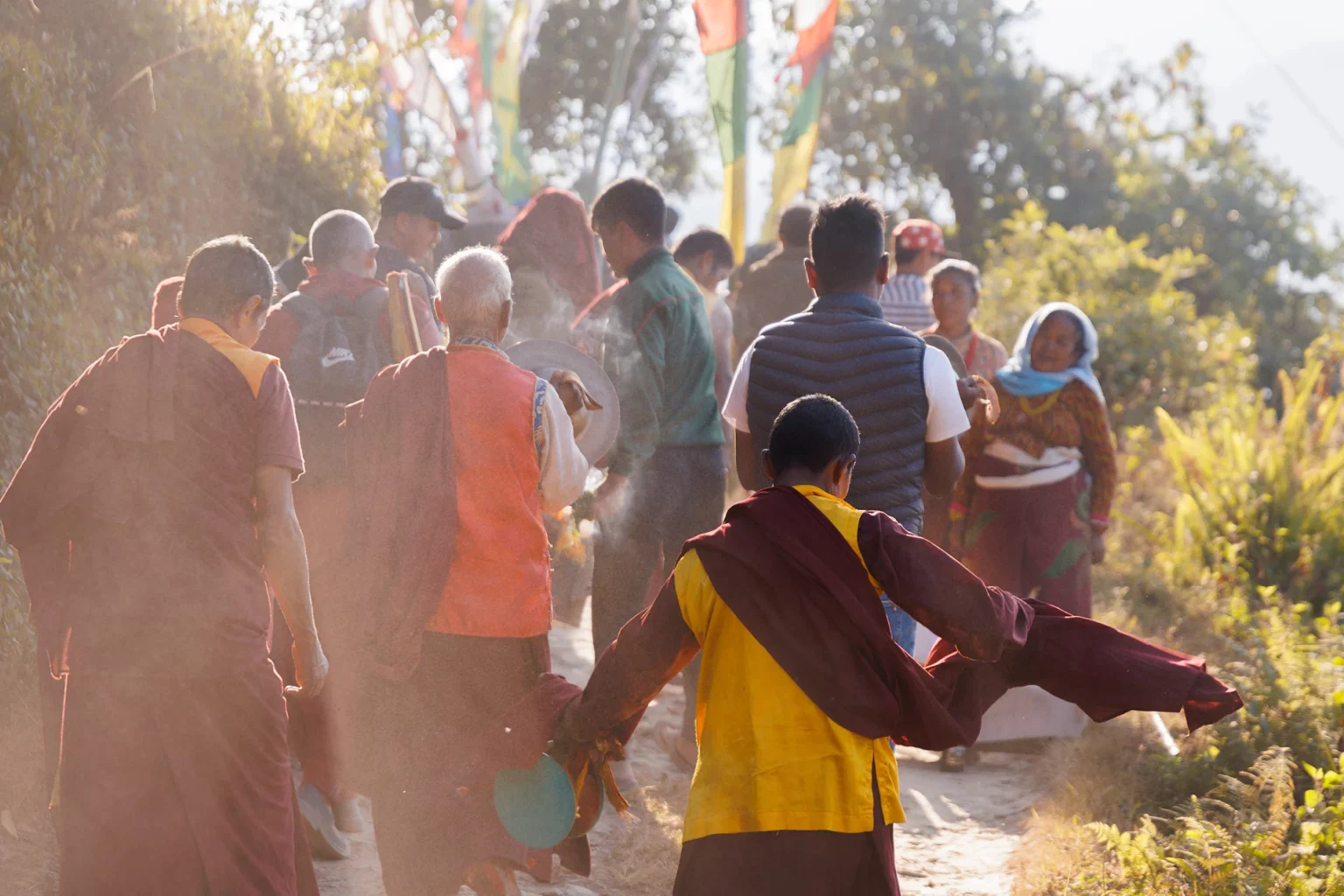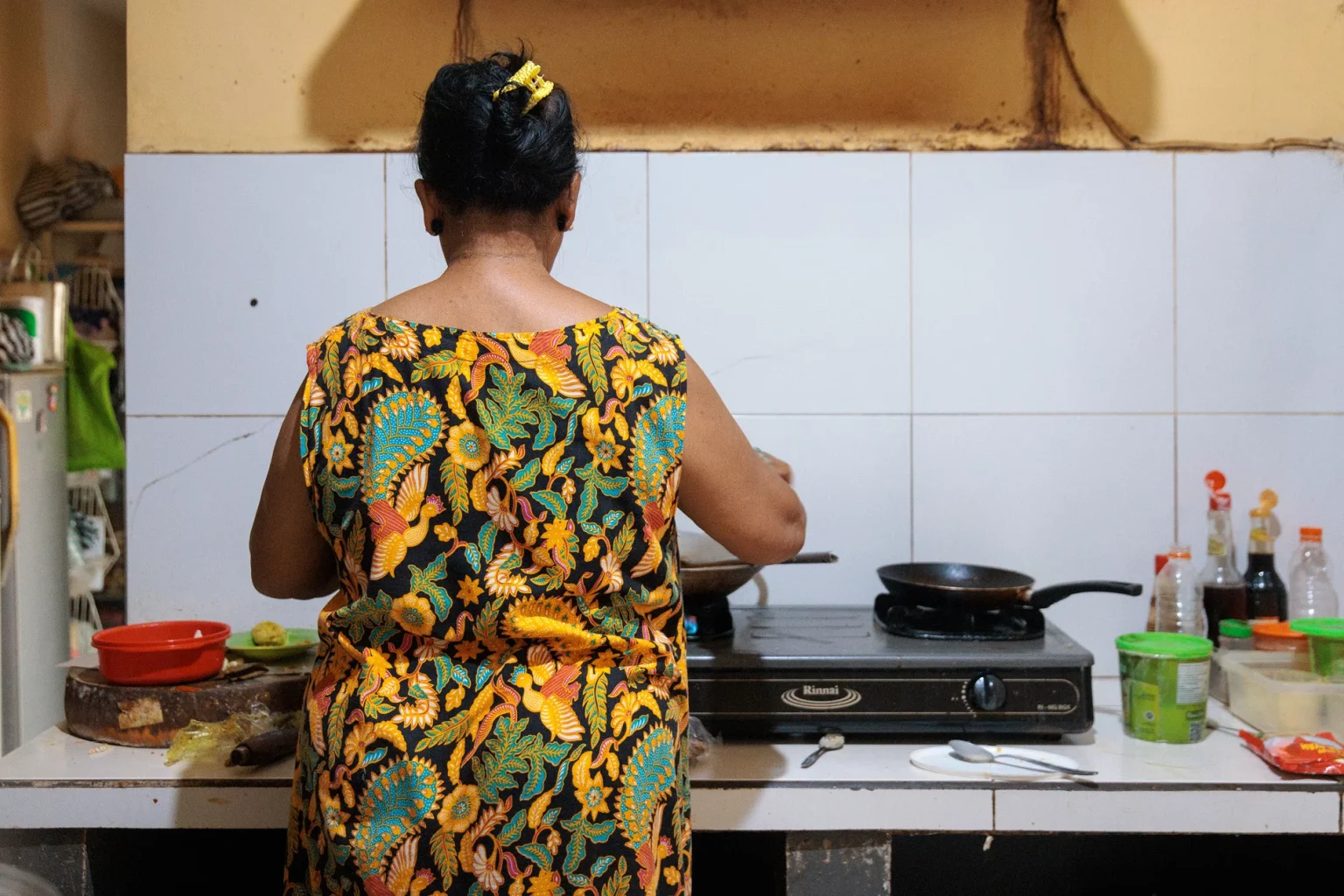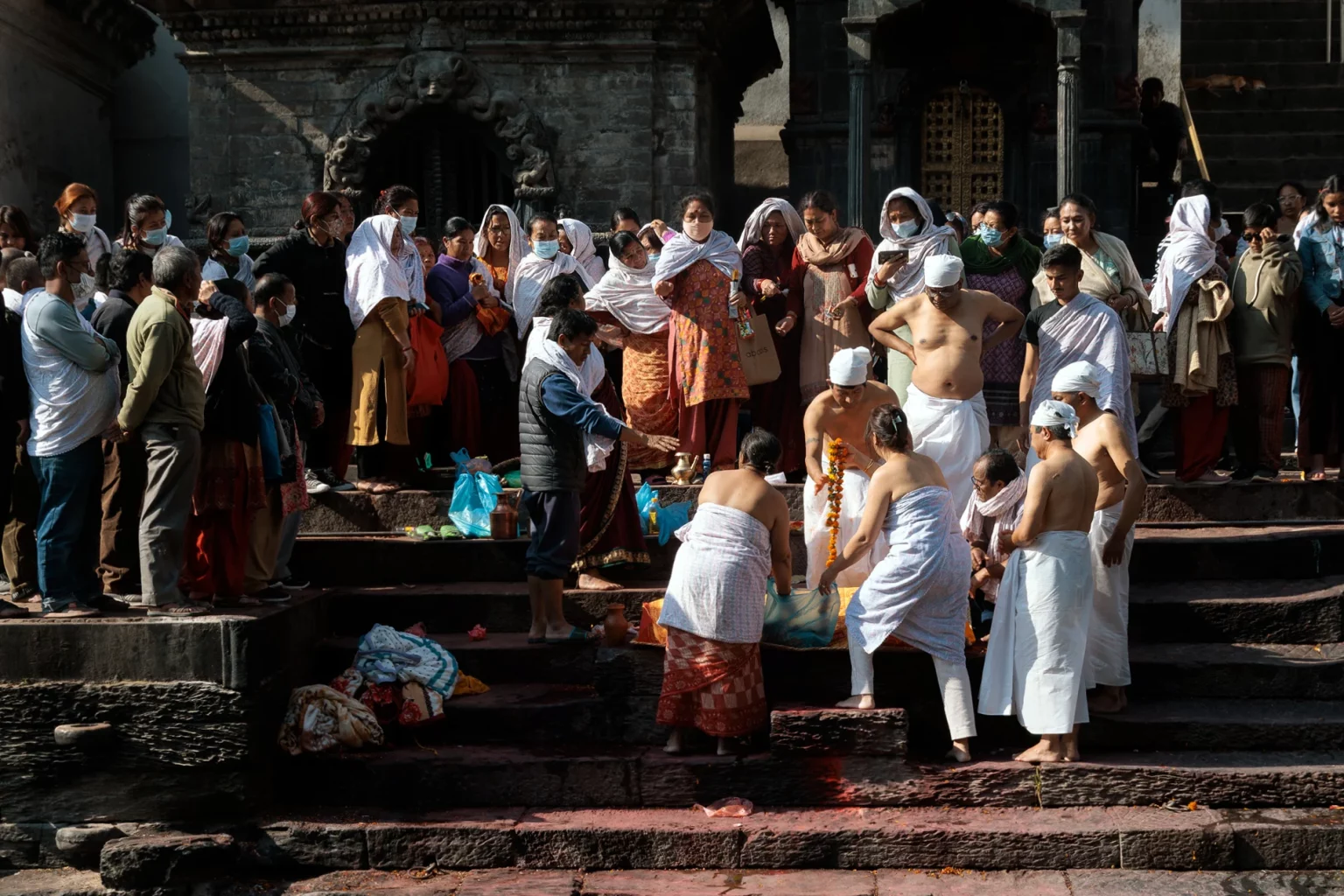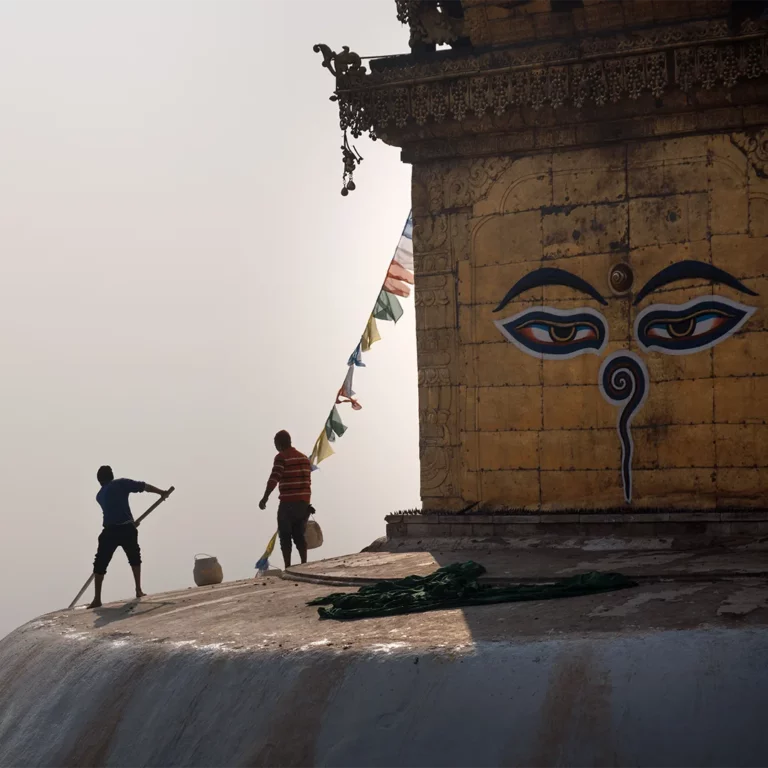Life has this inherent ability to surprise you in unexpected ways, serving as a reminder that planning and timing are often luxuries we shouldn’t take too seriously. Life and death in many remote places of the world are marked by certain practices and ceremonies that we have most likely forgotten: that’s why being able to witness the rituals of a Nepalese village was an experience that profoundly affected me.
A month prior to this adventure I had joined Amrit, my yoga teacher, in the Sailung trail close to his place of birth, Gagal Bhadaure. I fell in love with the authenticity and generosity of the villagers as well as the shamanic tradition that intertwines with the Buddhist beliefs of this isolated little town. As we left Gagal, I decided I would come back, but this time with the purpose of documenting this isolated part of Nepal.
Little did I know, this return would be marked by an extraordinary encounter with Life’s inevitable companion—Death.
We arrived at the end of the day. After a two hour walk from the valley, crossing rice fields, we reached the house of Ama, Amrit’s mom. We shared some food and rolled straight into our sleeping bags.
The drums of Kali
The next morning, as the sun had not yet peaked above the surrounding mountains, we went for a morning walk, stopping to pay our respects to the altar of the Hindu deity Kali Mata, the Goddess of time, change, cycles…
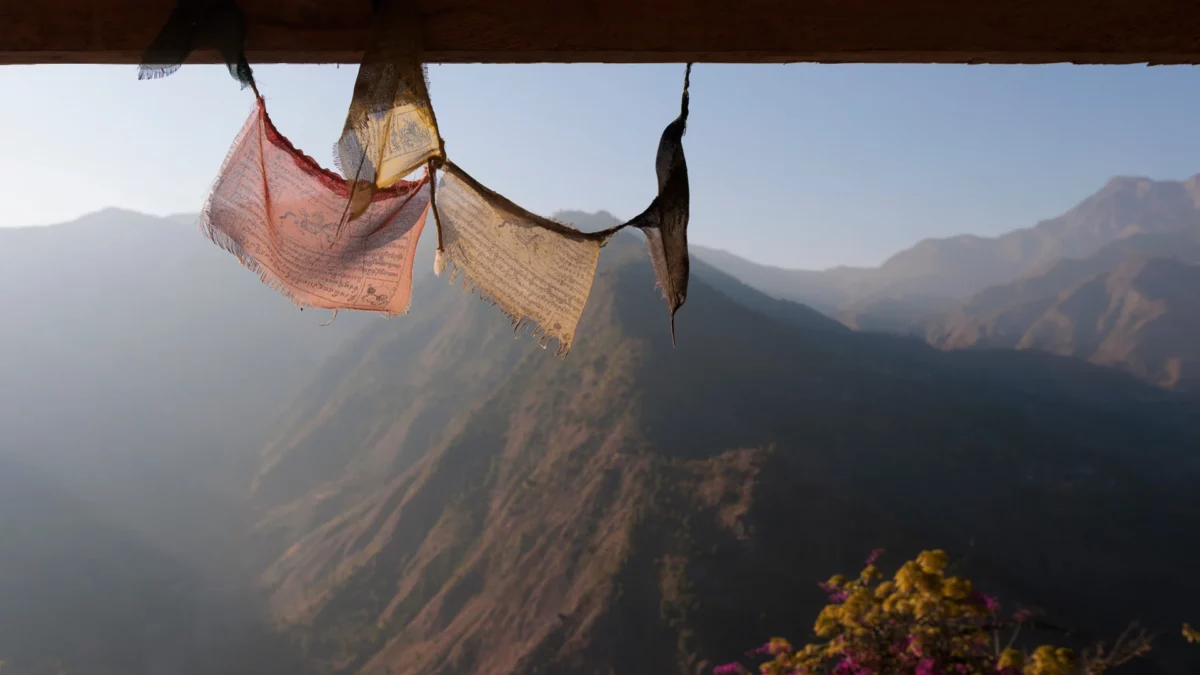
The village was calm, the soundtrack of the morning was a series of enigmatic thumps in the far.
In between drum beats Amrit said:
— “Someone died last night!”…
Then a couple of beats later he added:
— “…my Mom is going there, I’ll ask if you can go with her! You might want to take your camera.”
His simple tone unsettled me, and before I knew it, I was invited to document the ceremony. Sat on a bench waiting for his mother to get ready: I started to imagine how things would go, letting my mind wander. I quickly realised that I had no frame of reference, except for a little seed buried in my collective unconscious pocket.
Ama and I left, following the heartbeats of drums. Took a little stairs and arrived in the courtyard of a house nearby. It was a day that would flow without any of my control.
The gathering
The surroundings bustled with activity—guests chatting, kids playing. The house, alive, set the stage for the unique morning rituals.
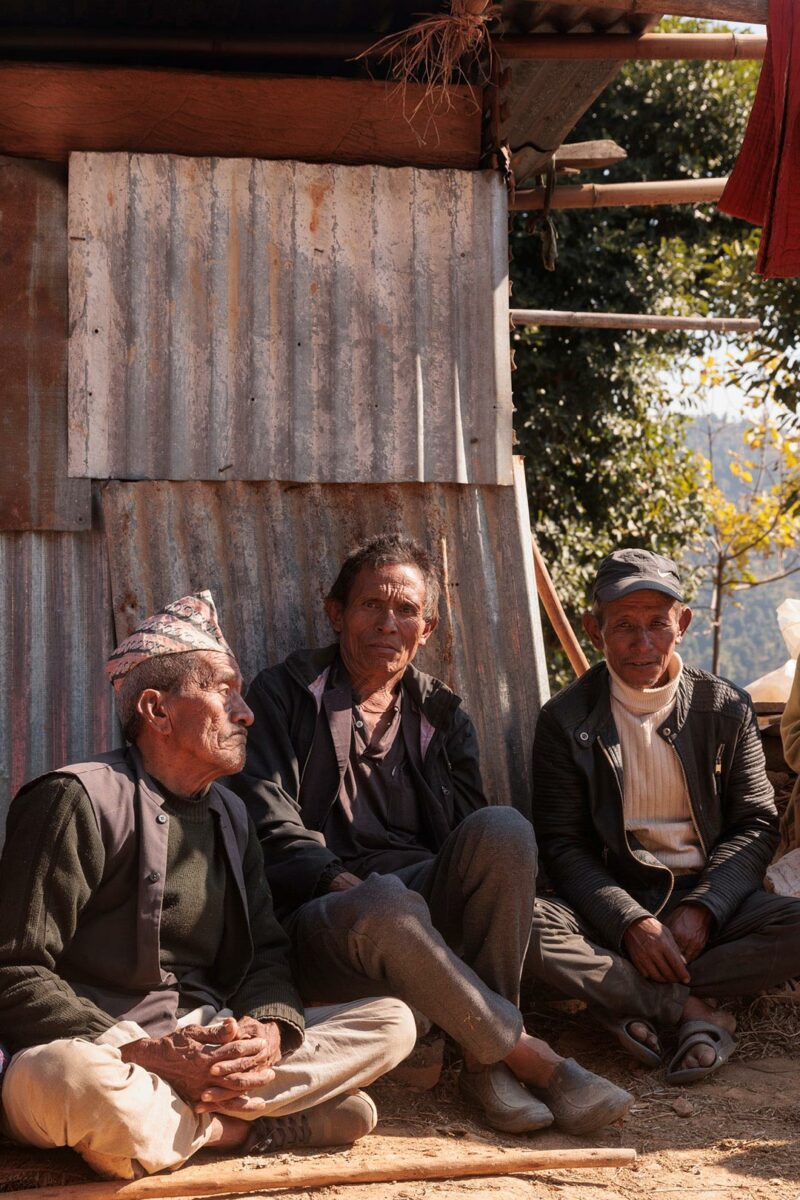
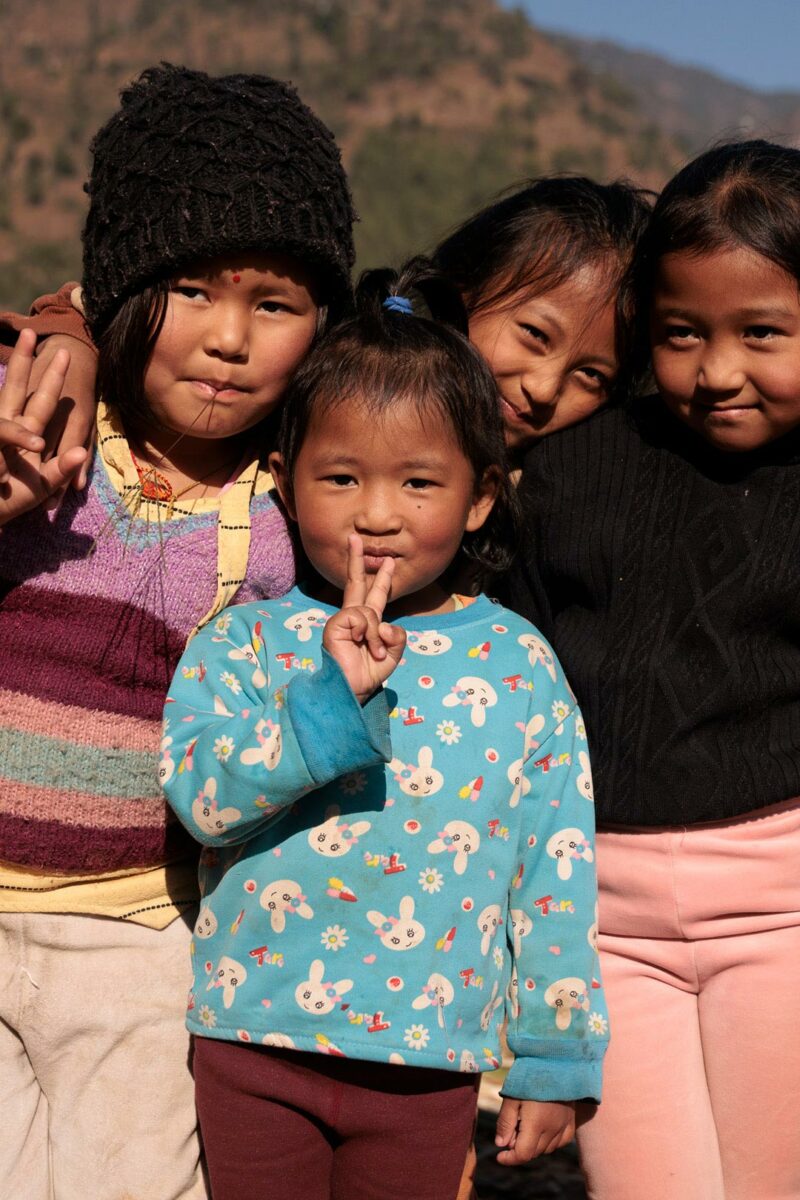
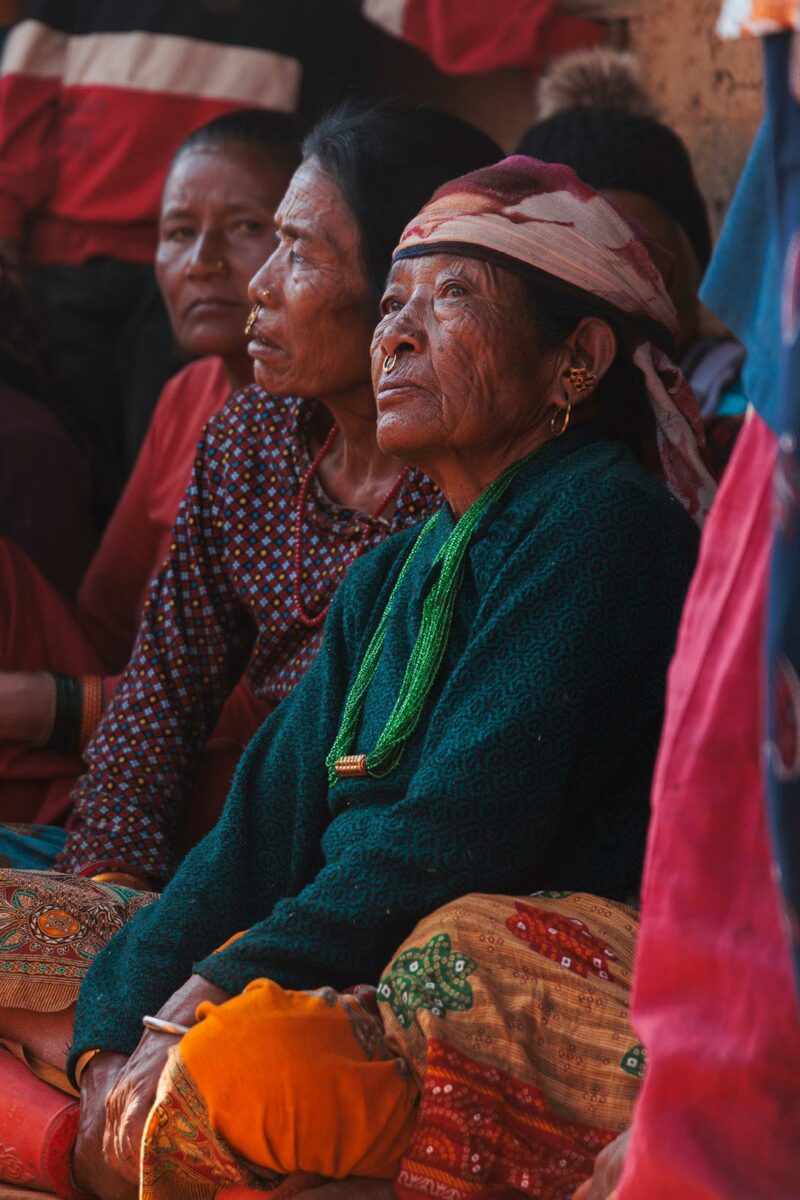
Of food and alcohol
A man invited me to sit on the floor next to the other guests, his wife brought me a glass of Rakshi and mountain dew. I could feel the curious gaze of all the locals on me. Shy and out of place, I didn’t know anyone, none of the customs and to make things even more challenging most of the common language was the dialect specific to the Tamang cast!
I looked at them, smiled, and drank the alcohol without hesitation as a plate of rice arrived my way.
During rituals in Nepalese village, food seems to symbolise unity and family. Alcohol helps to strengthen that invisible bond and open the mind to conversation. As I finished my plate I felt my shyness unpeel from my skin. I received another drink and slowly picked up my camera.
Preparations of the ritual
A first Lama came out of the house and, with white sand, drew a mandala on the floor, the others carried a Pyramidal construction made of bamboo and colourful fabric attached on a stretcher. Explaining in approximate English, my neighbour shared:
— “The corpse is inside, it is sitting in a meditative position”.
The Lamas had arrived in the early morning, they are the guardians of the spiritual traditions, and are there to facilitate a positive rebirth. They do so by helping the soul to detach from the physical world, through chant, dance, and music.
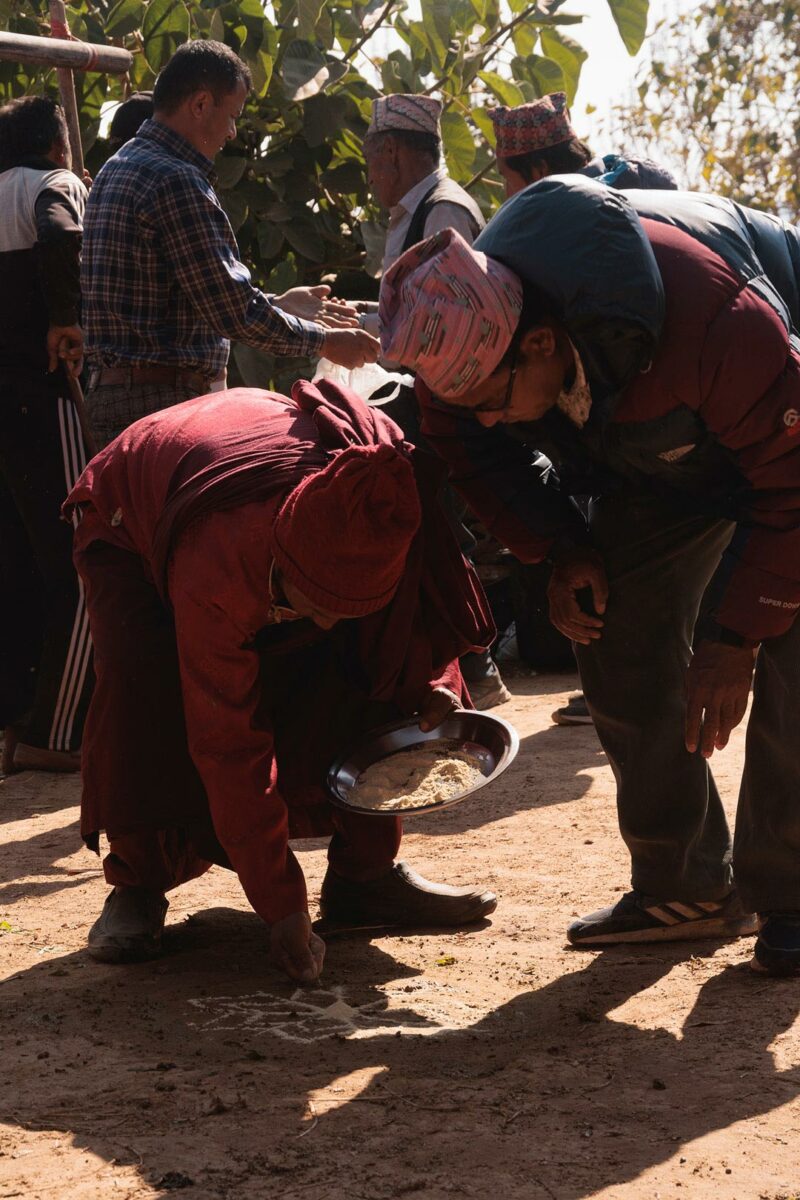
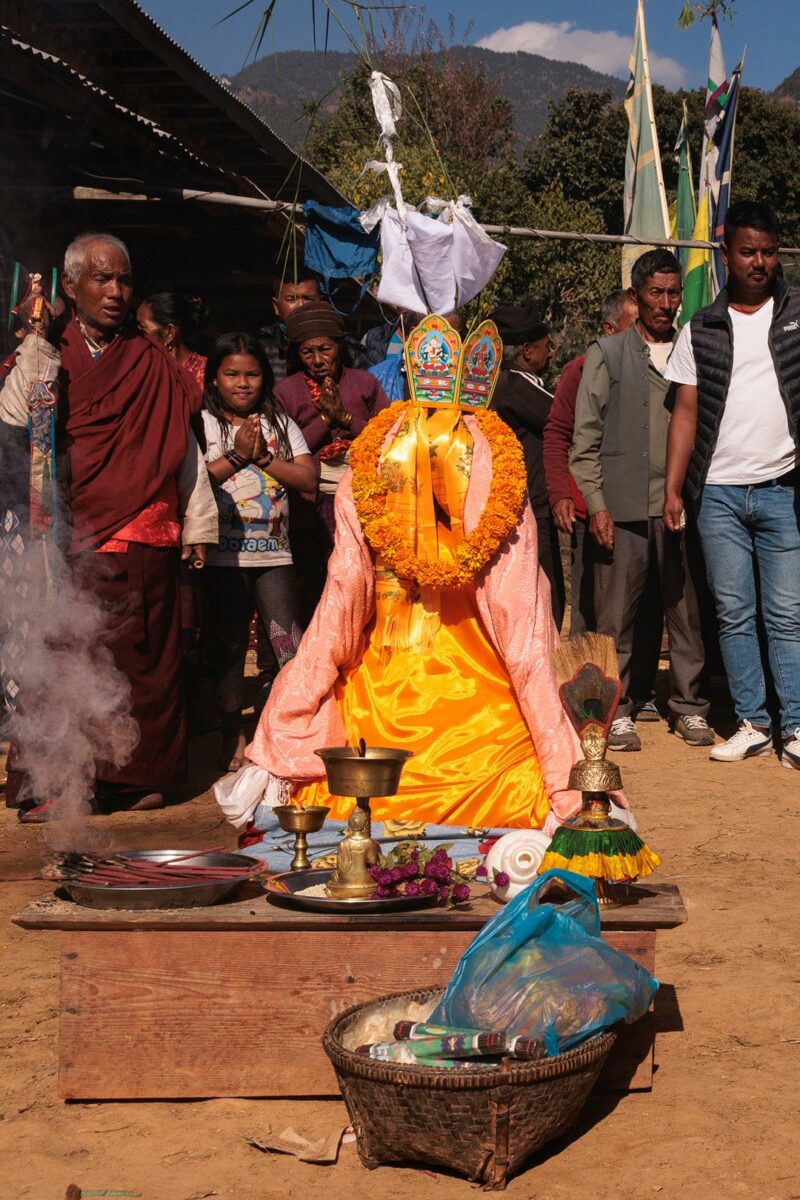
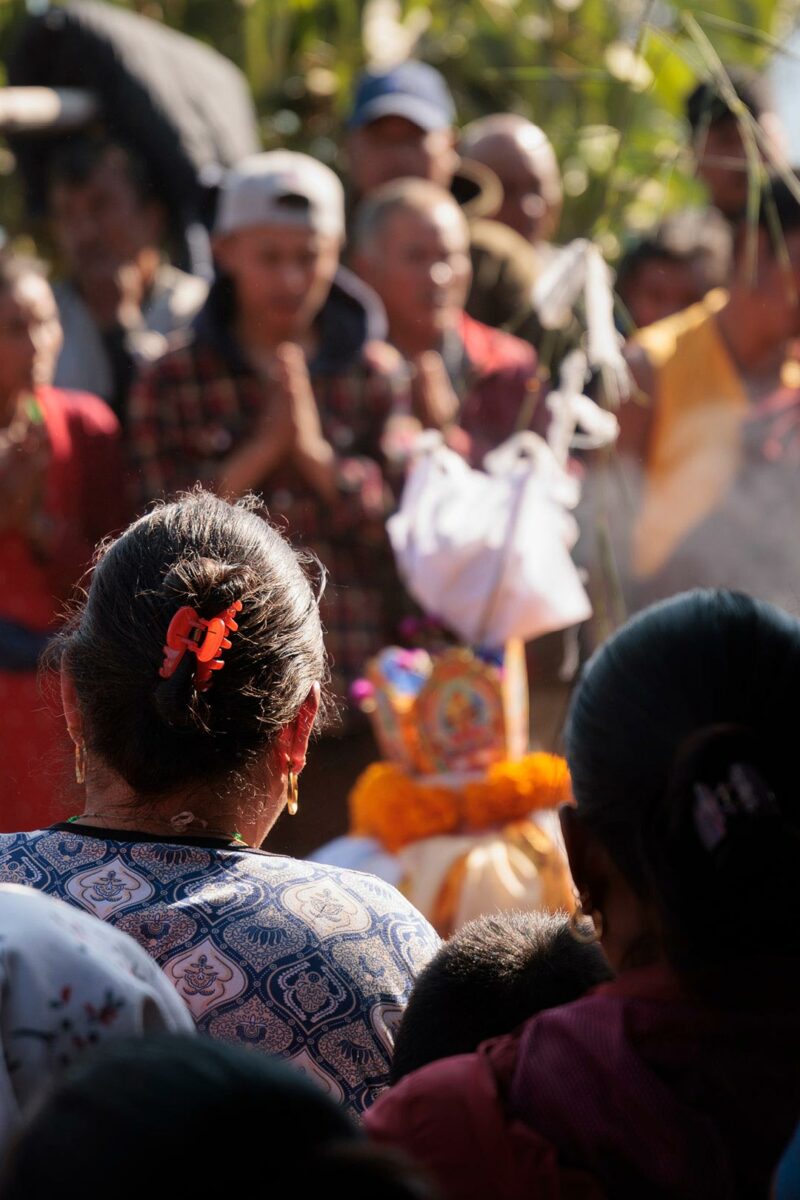
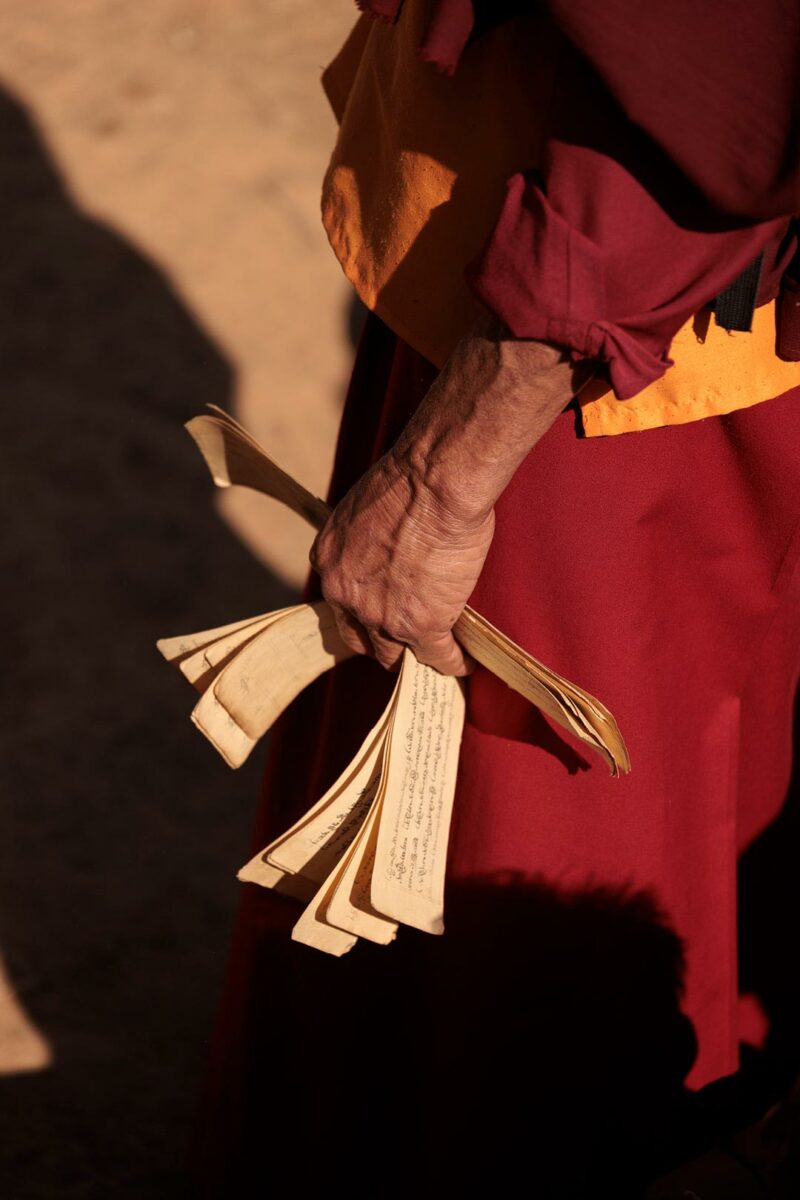
Dressed in their immaculate burgundy robes, some wearing extra silk clothing, they started to dance and pray around the body. I imagined those traditions, almost unchanged for centuries. I tried to picture the generation of monks who repeated those very same mantras, moves and rituals. If not for the fake Nike shoes, and Casio watch, I could as well have travelled in time. The villagers formed a second circle, holding incense sticks, all looking towards the sacred pyramid that cradles someone who till yesterday was a member of their society.
The spicy scent of incense took me out of my day-dreaming. The smoke rose in gentle wisps, carrying with it the collective prayers of the community. A symbolic offering that transcended the material world. The dance of smoke and sand as a silent hymn, the earthly chorus easing the spiritual journey of the departed soul.




The tempo of the drums changed. Flutes made of human bones, and horns made of conch shells adding a layer to the ethereal humming of the monks. One by one the members of the tribes started putting money in a makeshift basket attached above the pyramid. I reached into my pocket and retrieved some Rupees, humbly adding my small offering to this sacred gift. When in Gagal, do like the Tamang!
This act got me the sympathy of the elders.
The last journey begins
The Sun, higher in the sky, casted shorter shadows. The cold of the morning dissipated, possibly aided by the additional glasses of Rakshi we had indulged in. Four men lifted the stretcher in which the body is seated on and started to walk towards the main path of the village. At this point a sense of anticipation hung in the air, and I found it futile to seek answers about our destination or the duration of our walk.
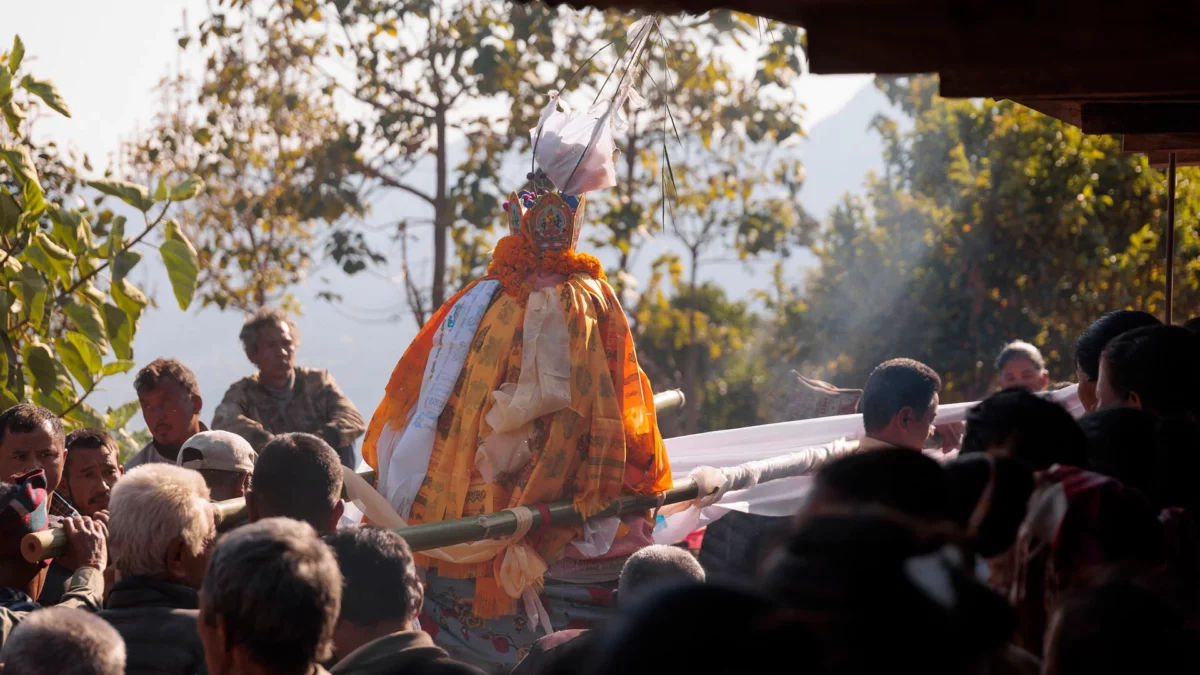
From what I know, in Tibetan Buddhism the dead bodies are given back to nature, often left for vultures to feast on. In Gagal the bodies are brought up to the top of a mountain to a sacred cremation ground.
Procession
To reach the holy place everyone walked together. Men opened the march holding long flag poles in the colours of the Tibetan prayer flags. Blue for space and heaven, white for air, red for fire and energy, green for water and harmony and lastly yellow for earth.
We are all just walking each other home
Ram Dass
Behind them, the Lamas were carrying a small altar and women were holding long white banners in the wake of the deceased.
The rest of the villagers compose the end of the procession. Like a long slithering snake on the curvy roads.



Some of the younger people engaged in conversation with me. As a foreigner, they consider me as a special guest and want to make sure that I am ok. They are keen to interact: “Where are you from brother”, “Come this way this is a shortcut you will have a nice view for the photo”, “Daai, here is another glass for you, ”,… Their English is often quite good, one of the positive traits of social media and youtube channels.
A last one for her road
Men took turns carrying the body, and sporadically, we paused for a rest in front of remote houses. As distant neighbours were coming to pay their respect and join the procession.
After nearly two hours of uphill trail, we halted and gathered in a small prairie, surrounded by majestic mountains and close to a serene forest. The significance of the Tibetan flags became vivid. All of the colours of the flags around us, except for the fire, the red, the transformation, the purification.…
By this point, the gathering appeared to have doubled.
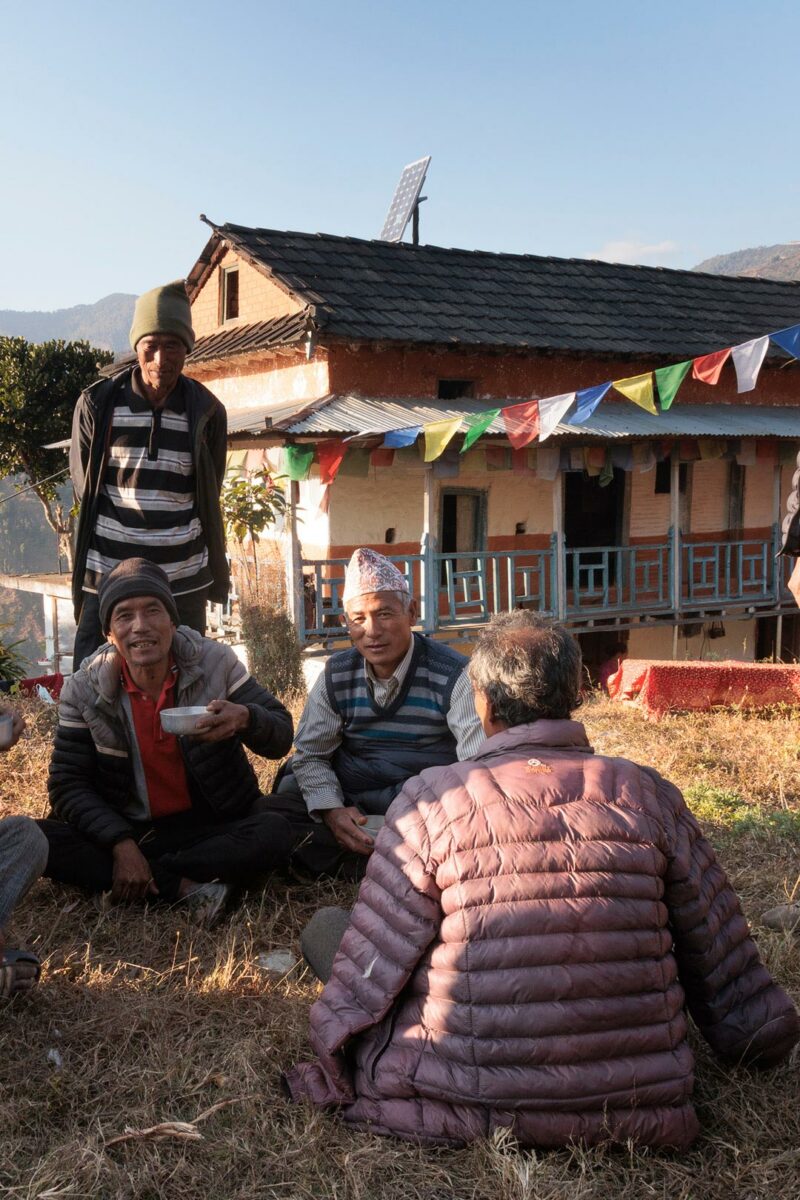
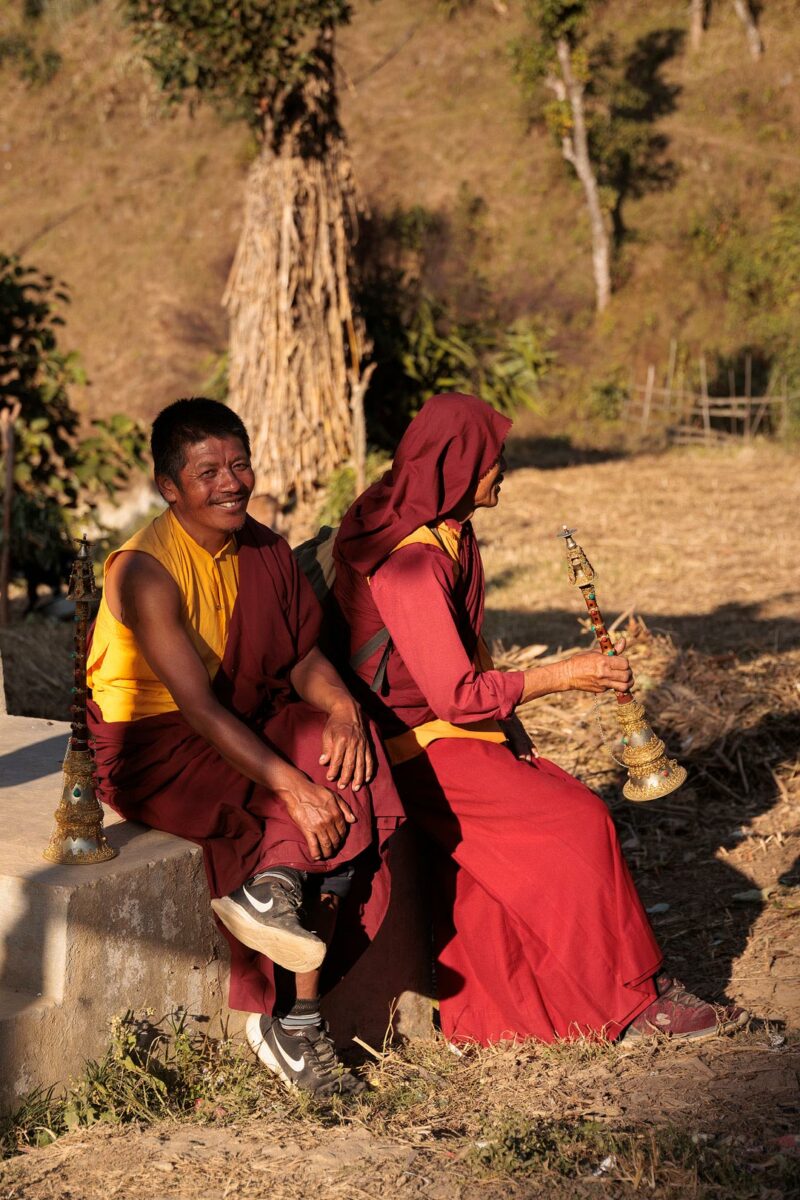
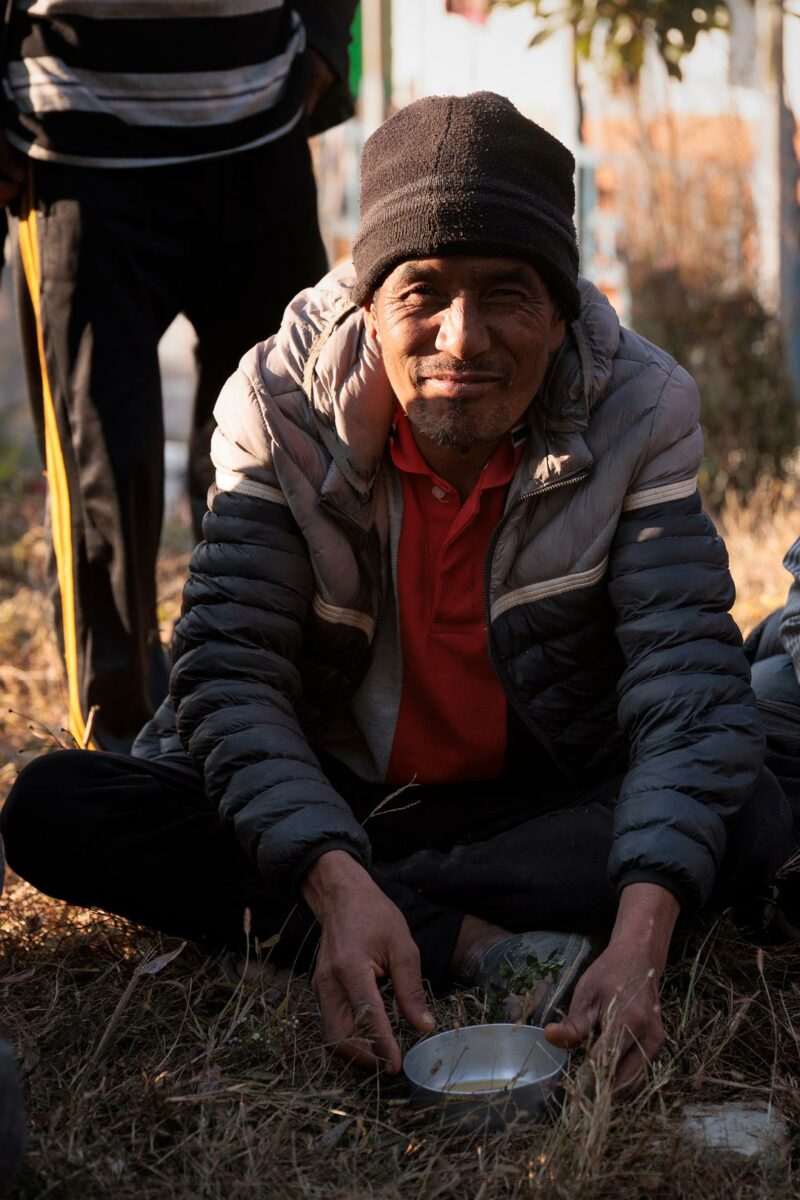
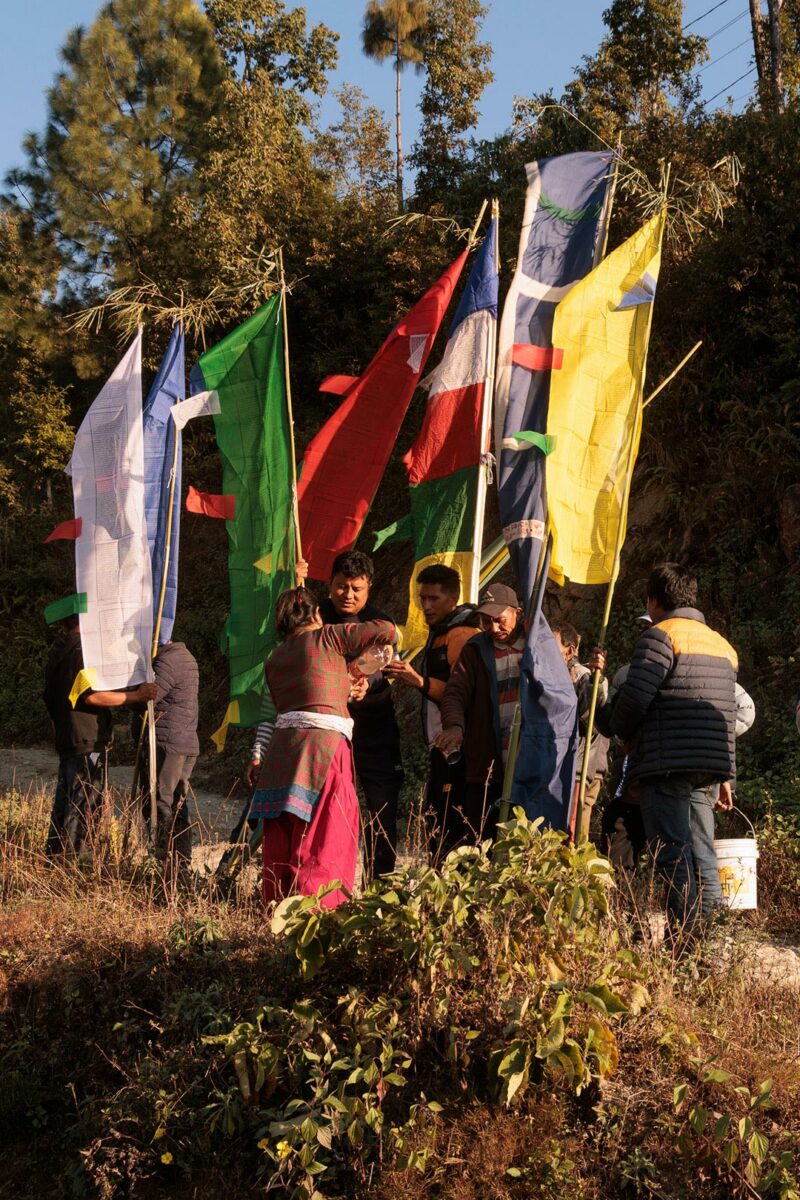
A substantial bucket of Chhaang arrived out of nowhere. My first thought being, “I’m not sure I need to drink more alcohol”, my second “wouldn’t it be impolite to refuse a drink from an elder?”. Chhaang is by far one of my favourite drinks of Nepal, its sour taste is achieved by fermenting rice with millet yeast. It’s a less strong and way more refreshing alternative than Rakshi. Drinking it with the locals is an excellent way to feel accepted in the family.
The collective energy signalled that it was time to resume our journey. Everyone was again strolling uphill! With renewed spirits, we set forth, the rhythmic steps echoing in harmony with the natural symphony surrounding us.
The Cremation Ground
Thirty minutes later, as we stepped into the woods, the chit chat ceased—we had arrived at the cremation ground. Tall pine trees blocked the sunlight, and the air grew humid. In the heart of the forest, a small clearing emerged, where a pyre was being prepared.
Spiritual Embrace of Nature
The corpse was installed next to the pyre and sat close by the lamas, who continued their endless prayers. The men started to cut more trees to add to the funeral fire while the women prayed and bowed to the body, an act I interpreted as a final farewell. One of the youngsters from earlier invited me to join them.
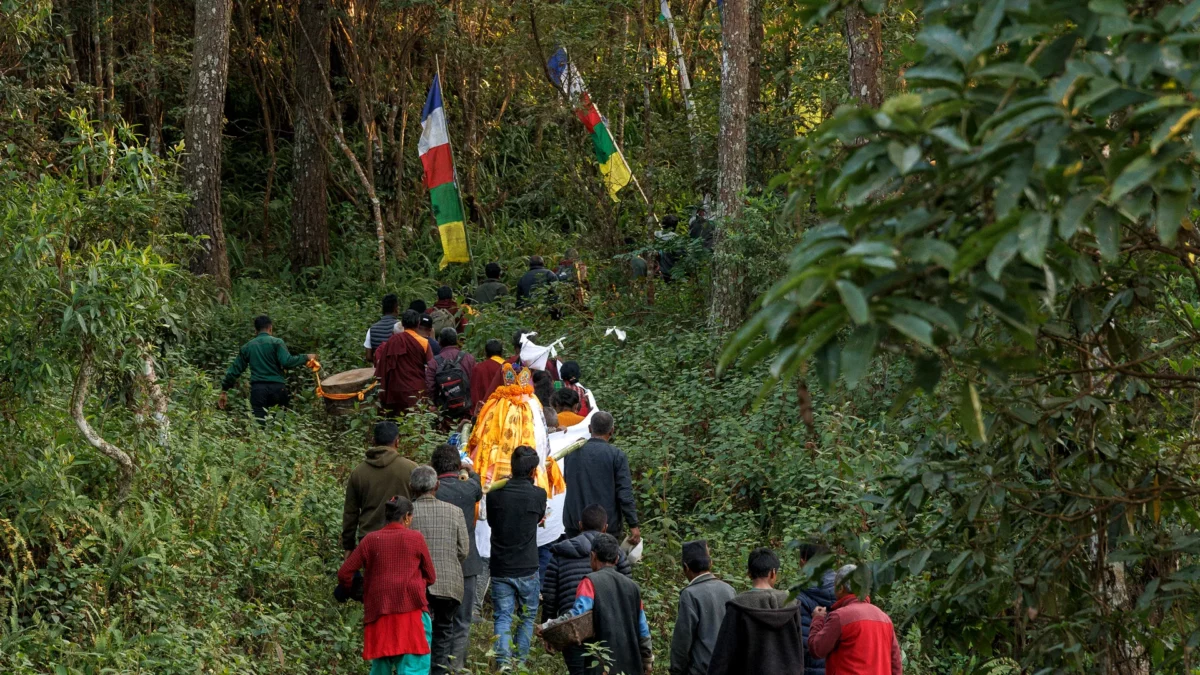
In the mountains, night falls early. The bright colours of the day faded, giving way to a dampening darkness. The trees grew orange reflecting the ceremonial candles and the small fire we made to keep us warm. In the flickering light, we all fell silent, leaving space to the spirit of the forest. Without any announcement the body was lifted and placed on the huge stack of wood, covered with massive branches of pine. It had the size of a small cabin.
— “Come closer, we’re gonna light the fire, take photos!”
Illumination
The first four elements of the prayer flag disappeared, consumed by the missing one—fire. In less time that it took me to approach, the entire wood turned orange, the silence overtaken by the crackling sound of boiling pine sap. All eyes were fixed on the burning edifice in silence.




I observed patiently taking the last photos my battery would allow for today. A hand tapped on my shoulder:
— “Jyl, we have to go now!”
As I looked around the majority of the crowd already left! How long had I been staring at the flames?
— “There might be leopards! We need to move in groups.“
It was one of my drinking buddies from earlier. He and his friends have been tasked with bringing me back home safely. At this news, without hesitation, I packed my things and started to move.
The Lama and some members of the family stayed; I learned that they would pray till the fire would stop. I wonder if Mahakali’s fire would protect them for the night, Goddess of destruction, transformation and cycle. Or was she there to gather a bodiless soul?
No one is left behind
We tread in darkness, retracing our day’s steps under the milky way, a group of five souls on a narrow road, with the mountain on our left and a sheer drop on our right.
Mid-way we encounter two silhouettes arm in arm walking on unsteady legs. Two drunk uncles, the nickname given to any man who’s older than you, who’s name is unknown to you. Our group of five is now seven, no one is left behind.
The quote of Ram Dass echoed: “We are all just walking each other home,” “we are all just walking each other…,” “we are all just walking…,” and at home, we had arrived.
When the journey ends – Life goes on
When I woke up in the morning, Ama was tending to the goats. She smiled at me and brought me some flat rice and spicy pepper to eat. Afar, residues of drums.
I joined her in the barn, the aroma of freshly brewed alcohol lingered. It smelled of burning wood and sour rice. Some women gathered at the entrance were already proofing the new batch.
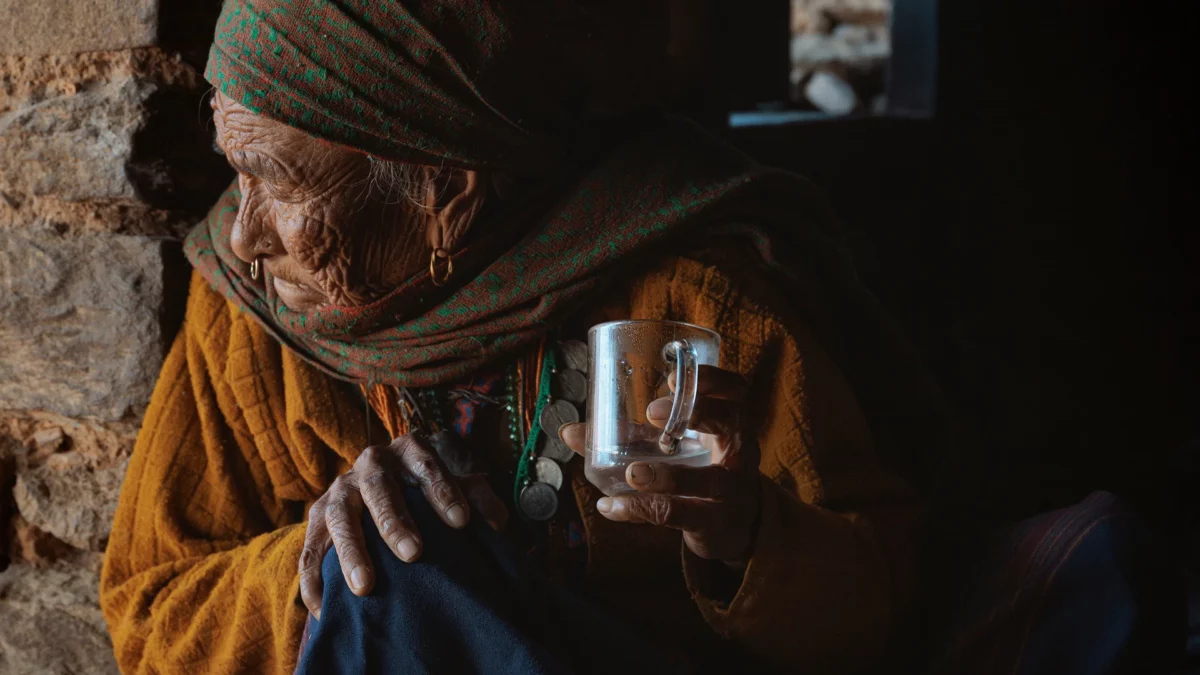
Ama handed me a cup of warm booze, “The hair of the dog” I thought. Akhe, Amrit’s grandmother, was telling tales from the past, or at least I imagine. Yesterday I was a stranger in this town but today, thanks to this experience we shared I was part of the town. I was not the same person.
Life is not a hero’s journey, it’s a series of hero’s cycles with beginning and ends, looping intertwines forming a huge fractal pattern. You are a part of others’ journey and they are entering yours, continuously and unnoticed, they silently build and transform you.
Adventures are not always with swords and magic, the treasure can be found in the unknown and unexpected. What seems unfamiliar was just hidden in the crack of our DNA. The drums, Kali, drinking together, the smell of incense, walking as one, living, dying,… It is all part of us!
If you enjoy this article please pin it!
